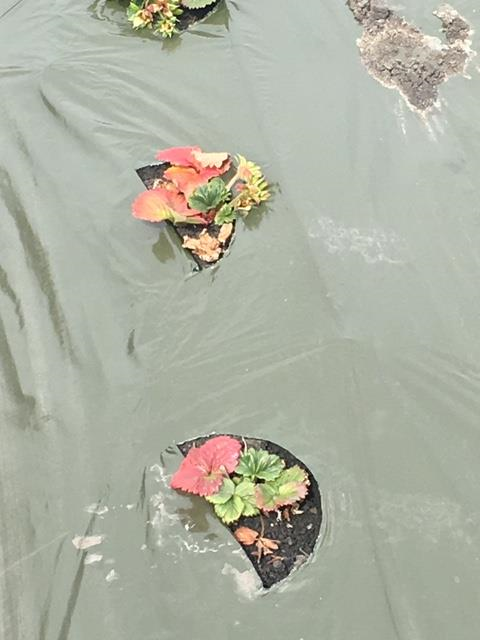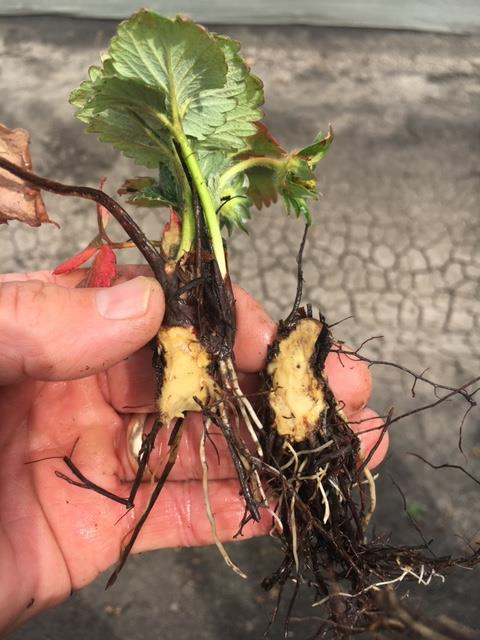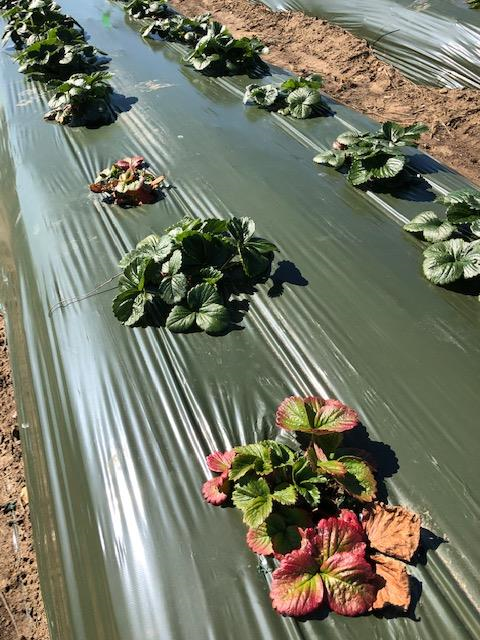While it's pretty common for Californians to set aside their complaints about rainy weather because we need the water, the flip side for the Central Coast strawberry industry is ruined fruit and plant problems.
I've been seeing a number of fields with the problem of Photo 1 below. Plants are barely growing, the foliage is discolored and the overall aspect is not great.
It's best to take a careful, step by step approach to these problems. Splitting open a crown of one of the plants from the field shown in the first photo shows no discoloration common to many soil diseases (and in this case diagnostic testing confirmed that). The discoloration of the foliage is consistent with a lack of nutrition, but that plants very close to the ones doing poorly are doing great belies the idea that the field as a whole is lacking.
Let's look at the soil of surrounding these plants for a moment. There is a lot of water associated with these areas (close observers of Photo 2 below, and I know there are many since they want to figure out whose field this is, will see that there has been standing water indicated by the cracked soil) engendered by being a bit lower than the other part of the field, or being on the heavier side of soil type. Other areas, which are not as low or not as heavy, not nearly as many sick plants, if any at all.
How then does one explain the lack of growth and more so the mineral deficiencies so evident in the leaves? Easy. An excess of water around the plant roots create a near, if not completely, anaerobic condition and interfere with the processes needed to take up minerals from the surrounding soil which in turn impede growth.
With the above steps completed, I'd feel pretty confident on making the call that this is water related. So much in fact that I'm writing a blog about it.
To be sure, disease is out there as evidenced by the third and last photo. These plants are very similar to the others, although the spotty pattern in the field gives one the sense that it's not excess moisture. Splitting open the crown revealed discoloration, and further testing at the diagnostic laboratory confirmed Fusarium.
Attached Images:

Photo 1: Aspect of plants in affected area. Discolored, small and struggling to grow.

Photo 2: Crown split open on affected plant. No discoloration, also note how very little the roots have grown over the three months or so since planting.

Photo 3: Looks like the same deal as above, but these were confirmed as Fusarium. You'll be hearing more about these soon I am sure.